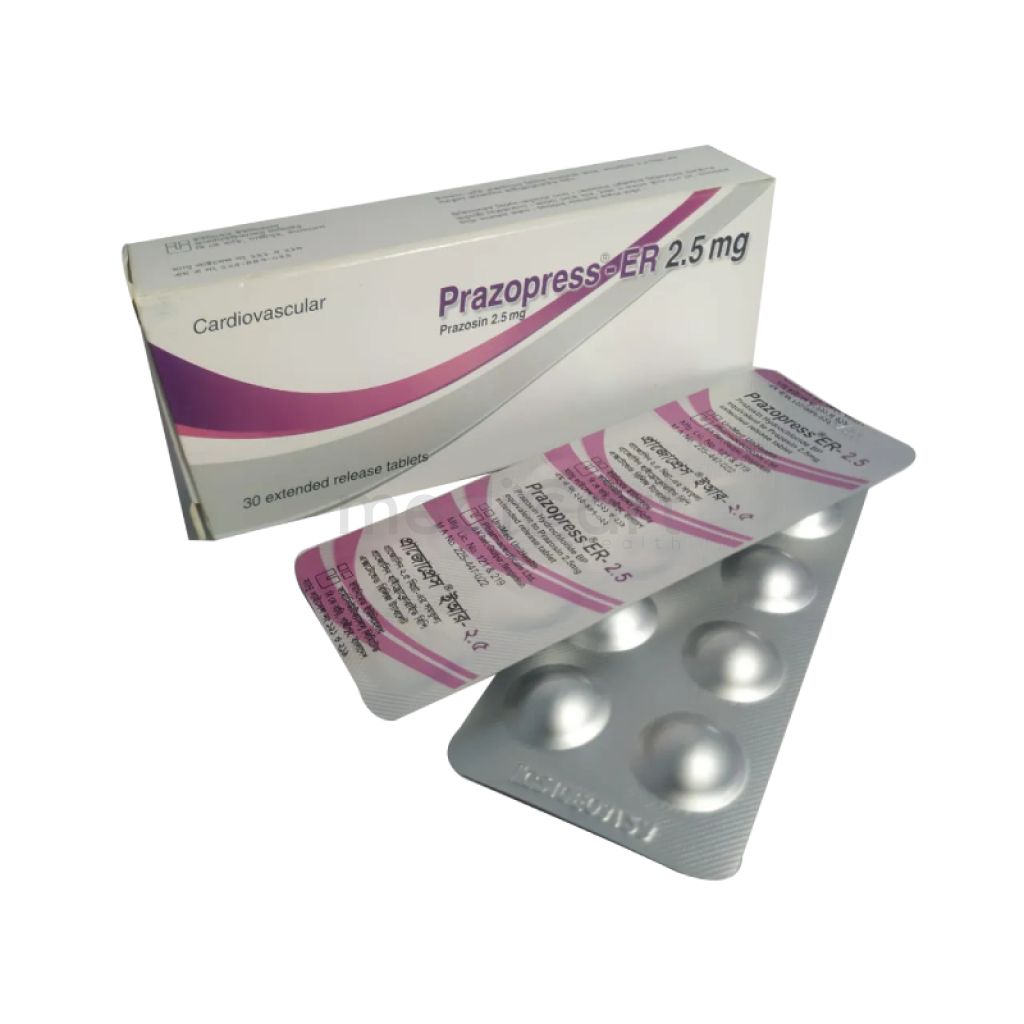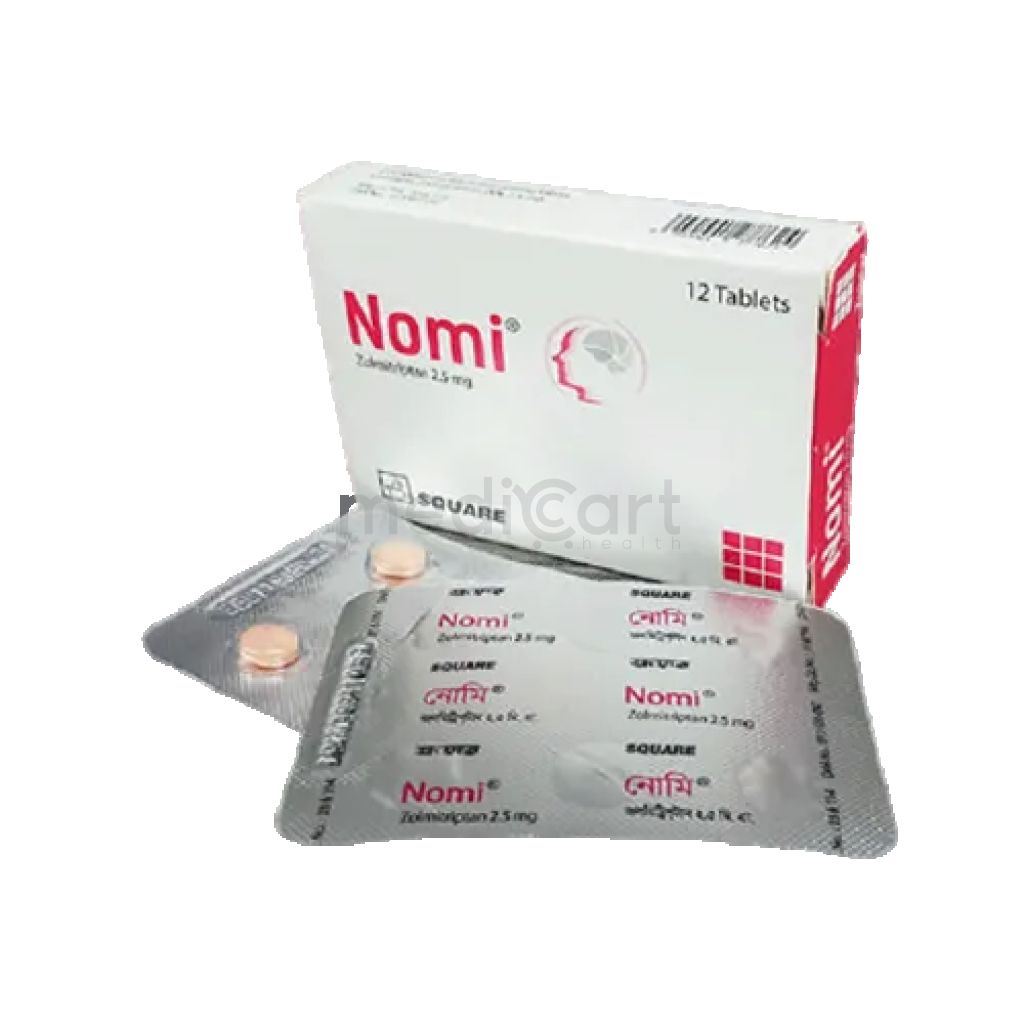

Alphapress XR - 2.5mg
Tablet
Pack Size :
10 Tablet x 1 Strip
Generics :
Prazosin
Manufacturer :
Renata Limited
Best Price *
TK
100.00
* Delivery will be done in Dhaka city only.
Alternative Product
More Information About - Alphapress XR - 2.5mg
Description
Generic Name
PrazosinPrecaution
Prostate cancer should be ruled out before starting therapy. Patients w/ history of micturition syncope, angina pectoris. Treatment of heart failure due to mechanical obstruction (e.g. aortic or mitral valve stenosis, pulmonary embolism and restrictive pericardial disease). During cataract surgery, Intraoperative Floppy Iris Syndrome (IFIS) may occur. Renal and hepatic impairment. Elderly. Pregnancy and lactation. Patient Counselling May impair ability to drive or operate machinery. A low starting dose is given in the evening to lessen the risk of collapse. Hypotensive effects may be exaggerated by exercise and heat. Monitoring Parameters Monitor renal function. Careful monitoring of BP during initial titration or subsequent upward dosage adjustment. Lactation: Excreted in breast milk; use cautionIndication
Hypertension, Benign prostatic hyperplasia, Raynaud's syndromeContra Indication
Congestive heart failure due to mechanical obstruction. Hypersensitivity. Pregnancy.Dose
N/ASide Effect
1-10% Dizziness (10%),Drowsiness (8%),Headache (8%),Weakness (7%),Asthenia (6.5%),Nausea (5%),Palpitation (5%) Frequency Not Defined (Selected) Edema,Orthostatic hypotension,Syncope,Fever,Rash,Abdominal discomfort/pain,Diarrhea,Vomiting,Abnormal liver function tests,Impotence,Pancreatitis,Urinary incontinence Potentially Fatal: Rarely, hypotension may be life-threatening.Pregnancy Category
Name : C
Description
Animal reproduction studies have shown an adverse effect on the fetus and there are no adequate and well-controlled studies in humans, but potential benefits may warrant use of the drug in pregnant women despite potential risksMode of Action
Prazosin competitively blocks postsynaptic alpha1-adrenoceptors of veins and arterioles causing vasodilation, reduction in BP and total peripheral resistance usually w/o reflex tachycardia.Interaction
Hypotensive effects may be enhanced w/ diuretics and other antihypertensives. Increased risk of 1st dose hypotension w/ ?-blockers or Ca channel blockers. Concomitant admin w/ phosphodiesterase type 5 (PDE5) inhibitors (e.g. sildenafil) may result in additive hypotensive effects and symptomatic hypotension.Pregnancy Category Note
Pregnancy category: C Lactation: Excreted in breast milk; use cautionAdult Dose
Oral Hypertension Conventional Tablet: Adult: Initially, 0.5 mg bid or tid for 3-7 days, increased to 1 mg bid or tid for the next 3-7 days. Thereafter, the daily dose should be increased gradually as determined by the patient?s response to the blood pressure lowering effect. Most patients are likely to be maintained on a dosage regimen of Prazosin alone of up to 15 mg daily in divided doses. Max: 20 mg/day in divided doses.Dosage should be individualized depending on patient tolerance and response. Extended Release Tablet: Dosage should be individualized depending on patient tolerance and response. Adult: Initially, Prazosin extended release 2.5mg once daily. Dosage may be increased slowly, in general over a 7 to 14 day period, depending on the response to each dose level. Max:Doses above 20mg once daily have not been studied. Maintenance dose: Dosage may be increased as clinically indicated to 20mg given in once-daily doses. Hypertensive patients controlled on Prazosin tablets alone or in combination with other anti-hypertensive medications may be switched to Prazosin extended release tablets at the equivalent or nearest higher total daily dose, e.g. Prazosin tablets 4 mg daily equivalent to Prazosin extended release tablets 5 mg once daily. Blood pressure measurements should be taken at the end of the dosing interval to assure adequate blood pressure control is maintained throughout the 24 hour period. Further titration may be necessary in some patients. Benign prostatic hyperplasia; Adult: Initially, 0.5 mg bid, increased to a maintenance dose not exceeding 2 mg bid. Raynaud Phenomenon 1-5 PO q12hr Elderly: Dose reduction needed. Hepatic impairment: Dose reduction needed.Child Dose
N/ARenal Dose
Renal impairment: Dose reduction needed.Administration
May be taken with or without food. Starting dose is best taken w/ dinner, at least 2-3 hr before retiring. Maintenance doses may be taken w/ or w/o meals.Disclaimer
The information provided herein are for informational purposes only and not intended to be a substitute for professional medical advice, diagnosis, or treatment. Please note that this information should not be treated as a replacement for physical medical consultation or advice. Great effort has been placed to provide accurate and comprehensive data. However, Medicart along with its authors and editors make no representations or warranties and specifically disclaim all liability for any medical information provided on the site. The absence of any information and/or warning to any drug shall not be considered and assumed as an implied assurance of the Company.









